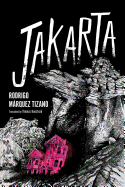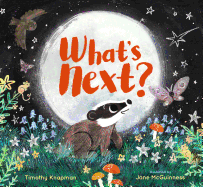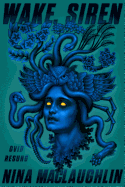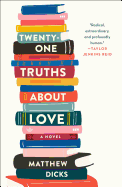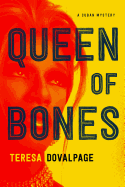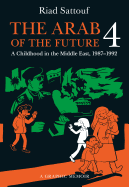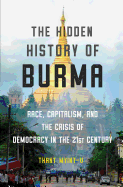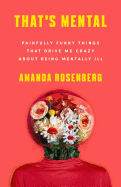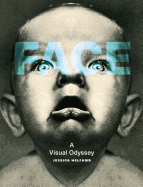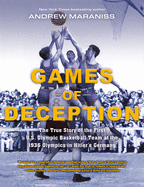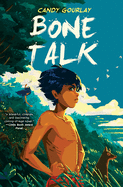Friday, December 13, 2019
Whatever your thoughts may be regarding yesterday's British election results, I'll confess that my Brexit perspective has been heavily influenced by BrexLit, a genre that "offers escape as well as insight: an opportunity to understand the nuances of Britain's decision to leave the EU in a fictional world where, possibly, no such vote has ever taken place," as Donna Ferguson wrote in the Guardian.
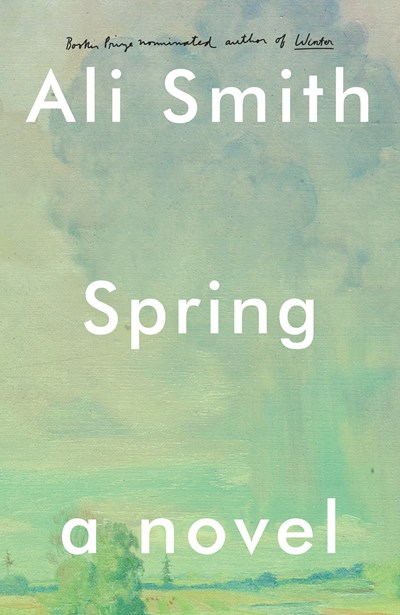 For example, I loved the first three novels of Ali Smith's Seasonal Quartet, including, most recently, Spring (Pantheon, $25.95). They're definitely on my BrexLit gift-giving list, along with these great reads for the post-election holiday season:
For example, I loved the first three novels of Ali Smith's Seasonal Quartet, including, most recently, Spring (Pantheon, $25.95). They're definitely on my BrexLit gift-giving list, along with these great reads for the post-election holiday season:
In The Wall (Norton, $25.95), John Lanchester imagines a not-so-distant future in which England has literally enclosed its borders. Ordinary citizens like the narrator must "do their bit" for two years as guards to keep out, well, everybody ("It is frightening but also in its way a little bit freeing. No choice--everything about the wall means you have no choice."). Until you do.
"Darkness was a long time coming," Sarah Moss writes in Ghost Wall (FSG, $22), an extraordinary feat of storytelling that somehow finds a way to be fiercely relevant and contemporary without ever entering the 21st century. A Guardian reviewer said Moss "appears to collapse layers of history, to render skin and knife and rope identical across millennia."
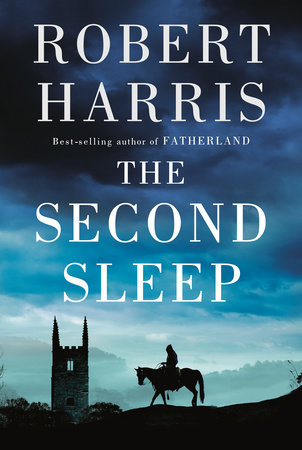 Robert Harris re-imagines the Dark Ages in The Second Sleep (Knopf, $26.95), his speculative take on humankind's seemingly contradictory, yet eternally consistent, twin appetites for self-destruction and reinvention. ("One does not burn knowledge. One hides knowledge--one keeps it close.")
Robert Harris re-imagines the Dark Ages in The Second Sleep (Knopf, $26.95), his speculative take on humankind's seemingly contradictory, yet eternally consistent, twin appetites for self-destruction and reinvention. ("One does not burn knowledge. One hides knowledge--one keeps it close.")
And then we have Agent Running in the Field by John le Carré (Viking, $29), a master at tailoring the world's complexity to fit the perilously thin frame of one individual's conscience and character. ("Brexit had long been a red rag to me. I am European born and bred.... All the same, I had qualms about giving him the answer he was demanding.")
Give the gift of BrexLit this year. --Robert Gray, contributing editor
Mary Toft; or, the Rabbit Queen
by Dexter Palmer
"Is truth... a matter of consensus, subject to debate, subject to alteration?" Mary Toft; or, The Rabbit Queen by Dexter Palmer (Version Control) follows a woman who, implausibly, gives birth to rabbits and who, as she struggles to control the narrative of her own body, challenges the beliefs of a patriarchal society.
In 1726, in the village of Godalming, England, surgeon John Howard and his apprentice, Zachary, attend to a woman giving birth. Horrifyingly, bloody rabbit parts emerge instead of a child. Howard, a sensible man, can't believe what he's witnessed. And, yet, he saw this event with his own eyes. Mary continues to birth rabbit pieces every few days. Presuming that Mary is imperfect in the eyes of God, Howard confers with London surgeons, who soon arrive with an overblown sense of their ability to "cure" her.
Mary Toft is the subject of the story, but her voice is rarely heard. Her life and her body are contextualized by men around her, who profess an understanding that they don't have. When Mary speaks, briefly, her frustration is clear. Howard's wife, Alice, scoffs at Mary's story from the beginning, considering her "an outright fraud." Predictably, Alice's intimate knowledge of how a woman's body works is brushed aside by the surgeons who, they claim, know more about women's physiology than she does.
This is a suspenseful, thought-provoking narrative that pairs well with dystopian fiction such as The Handmaid's Tale, and raises uncomfortable questions about women's lack of control over their bodies--which, unfortunately, seems unchanged over the centuries. --Cindy Pauldine, bookseller, the river's end bookstore, Oswego, N.Y.
Discover: A woman stuns the medical community by giving birth to dead rabbits, prompting unsettling questions about the intersection of truth and beliefs.
Jakarta
by Rodrigo Márquez Tizano, transl. by Thomas Bunstead
"A labyrinth, he concluded, is nothing but a way of seeing," Mexico City-born editor and journalist Rodrigo Márquez Tizano writes near the end of Jakarta, the dense yet slender lulu of a first novel translated from the Spanish by Thomas Bunstead.
Outraged and outrageous, disgusted and disgusting, every bit a miniature labyrinth in itself, Jakarta offers a way of seeing, over its 160 pages. Tizano summons the past, present and future of Atlantika, an invented Latin American city continually beset with plagues, as understood by an exterminator who beholds visions of his own and his country's history through a glowing stone in a small apartment as life rots away outside.
With the splattery verve of a horror writer, Tizano guides readers through his narrator's experience gathering diseased corpses and slaughtering rats--underground their "thousands" of eyes glow like "multicolored sequins." But Jakarta is horror-touched rather than horror itself, with beguiling short chapters--running from a few lines to a couple of pages, without paragraph breaks--and a mad variety of interests. One burst of prose might consider the history of infections over centuries, quoting fictitious journals from original European invaders, who let disease implement the hard work of conquest. The next might hilariously survey the fervor for a made-up team sport in Atlantika in the days before the final outbreak, or recall the nun whose geography lessons years ago inspired the narrator to fantasize about unknowable Jakarta. To show it all at once, Tizano dares readers to get a little lost. --Alan Scherstuhl, freelance writer and editor
Discover: This challenging, provocative short novel conjures fever-dreams of a city ravaged by plague.
Wake, Siren: Ovid Resung
by Nina Maclaughlin
In Wake, Siren, her first story collection, Nina MacLaughlin (Hammer Head: The Making of a Carpenter) reexamines the myths of Ovid's epic poem The Metamorphoses through a lens superheated with feminist rage. The raw, smart, outspoken result practically sears the reader's hands.
MacLaughlin reclaims the voice of almost every female character in the nearly 1,200 lines of the original work. "We don't always know what's inside of us, or what it might take to free that creature from its cage," warns one of the shapeshifting narrators of these 34 stories. Sea-nymph Galatea confides in her best friend Scylla about the e-mails from her stalker, a cyclops, threatening her and her boyfriend. In a therapy appointment transcript, Myrrha explains her taboo love for her father and begs to connect with the tree she believes is inside her. Nereid Thetis shapeshifts, in lines of poetry, from woman to "Fox/ flame across the backyard sleek and fleet as fire," and dozens of other forms, hoping to escape rape by Peleus. Callisto, Ursa Major herself, reveals the rage that powers the stars of her constellation and, in counterpoint, Medusa tells the secret of what turns those who look upon her face to stone.
Some stories hew closely enough to each other to feel somewhat repetitive. However, the fatiguing nature of reading multiple accounts of sexual assault also highlights the seriousness of the subject matter. MacLaughlin's stories are vivid, wrenching and urgent. Literary fiction readers and classics fans will not want to miss this gutsy reimagining. --Jaclyn Fulwood, blogger at Infinite Reads
Discover: MacLaughlin puts a feminist spin on the stories of women from Ovid's The Metamorphoses with dark, angry and exhilarating results.
Twenty-One Truths About Love
by Matthew Dicks
Dan Mayrock loves his wife, Jill, but he's ashamed to admit the bookshop he opened after he quit teaching is failing. It's bad enough he regrets the decision every day. Even worse, he fears he is not as good to Jill as her deceased first husband, who "took away all of Jill's worries about money." Then Jill becomes pregnant, pushing Dan to consider both ridiculous (asking billionaires for money) and radical (robbing bingo halls) solutions to their pending financial disaster. Because if he tells the truth, Dan fears Jill will leave him, just like his father left 15 years ago. And Dan's tired of fear.
Dan's attempts "to be someone... to do something" transpire entirely through his "obsessive and possibly crazy" lists--a brilliant tactic for portraying an insecure man who best expresses through writing his on-point axioms ("A birthday party without a cake is just a meeting"), pontifications on the mundane ("Is it better to eat a 250-calorie Twix or a 345-calorie avocado?") and devastating self-reflections ("3 reasons why I am a terrible man"). Characters burrow straight to readers' hearts, like Dan's bingo partner Bill, a 72-year-old Vietnam veteran whose wife was murdered yet still he "smiles at foam hearts in lattes."
As Dan aims to take care of Jill, he shows why doing anything to keep her love--including tolerating her use of hampers for storage--is vital. Twenty-One Truths About Love by Matthew Dicks (Memoirs of an Imaginary Friend) demonstrates how love can inspire bravery and self-sacrifice--how it can reveal us at our worst and at our best. --Samantha Zaboski, freelance editor and reviewer
Discover: Sharing his story entirely through lists, a desperate husband and father-to-be devises hair-brained schemes to solve his financial crisis.
Mystery & Thriller
Queen of Bones
by Teresa Dovalpage
The retired-detective-turned-Santería-priest Padrino gets a second chance to play savior in Teresa Dovalpage's continuing Havana Mystery series (Death Comes in Through the Kitchen).
Two decades earlier, Juan escaped the island of his birth by raft, barely surviving the journey to Miami, Fla. He's now a former waiter and salsa dance teacher in Albuquerque, N.Mex., who, seven years ago, married his boss, Sharon, a local real estate agent who employed him to do "whatever" for her company. Yet his "Cuban tragedy" looms, and he's finally about to make his first visit back to "deal with too much baggage" he's left behind.
Just days before Juan's departure, Sharon overhears a phone conversation she shouldn't have, discovers a mysterious photo on Juan's computer and books herself on his same itinerary. When Sharon secretly follows him to his first reunion, she watches as Juan meets a buxom, platinum-blonde stranger. What Sharon can't know, and Juan is shocked to learn, is that "goofy, skinny Victor," Juan's best friend since third grade, has transformed into glamorous nightclub superstar Victoria Sunrise.
Victoria invites Juan back for lunch with his ex, Elsa, and Juan can't refuse. But when he arrives, Victoria has already been found dead in the bathroom by her fiancé, Lázaro. Murder requires the reappearance of santero Padrino as the "on-the-side... private eye" to figure out what the police are clearly missing. While the collision of past and present produces fatal results, the ensuing labyrinthine journey provides readers with plenty of compelling diversions along the way. --Terry Hong, Smithsonian BookDragon
Discover: A Cuban refugee returns to Havana to confront unfinished relationships from two decades past, but reconnecting with friends and lovers yields tragic consequences.
Graphic Books
The Arab of the Future 4: A Graphic Memoir of a Childhood in the Middle East, 1987-1992
by Riad Sattouf, transl. by Sam Taylor
In The Arab of the Future 4: A Graphic Memoir of a Childhood in the Middle East, 1987-1992, Riad Sattouf continues to chronicle his upbringing in Syria, Libya and France. The fourth installment of Sattouf's story focuses on the artist's teenage years. While his father, Abdel-Razak, is employed as a professor in Saudi Arabia, Sattouf's mother keeps Riad and his sibling in her native France--a land at once entirely foreign and utterly familiar to the adolescent Sattouf. Things turn sour in a hurry once Abdel-Razak unexpectedly appears at the front door. The ideological disparity between Sattouf's parents reflects the battle of beliefs concurrently taking place within the artist's head.
Despite the whirlwind of languages and geographies at play in Arab of the Future, all readers can empathize with the confusion endured by the teenage Sattouf. In illustrated panels that favor immediacy over intricacy, Sattouf conveys complex emotions and significant moments both large and small with the tweak of an eyebrow or the placement of a wrinkle. Underscoring the story is a color palette that changes from blue (France) to pink (Syria) to help readers keep track of the young Riad's location. Struck through with moments of terrible violence and subtle revelation, The Arab of the Future will be regarded as a vital text for future generations eager to understand the vastly complex and often brutal landscape of the Middle East at the close of the 20th century. --Zack Ruskin, freelance reviewer
Discover: The fourth volume of Riad Sattouf's acclaimed graphic memoir series moves from France to Mecca to Syria as it explores the artist's adolescence and his parents' failing marriage.
Biography & Memoir
All Blood Runs Red: The Legendary Life of Eugene Bullard--Boxer, Pilot, Soldier, Spy
by Phil Keith and Tom Clavin
Eugene Bullard's life could have inspired many shelves of books and more than one motion picture, yet he has remained largely unknown until now. His father, born in slavery, raised him on tales of France as a land free from the racist animus of his native United States. As a young teen, he ran away from his home in Georgia and embarked on a journey that would eventually take him there. Bullard made a living as a jockey, an entertainer and a boxer, and had already lived a life of adventure before the Great War broke out. He then enlisted in the French Foreign Legion, where he would eventually become the first African American combat pilot. In the interwar years, Bullard played in and eventually managed a jazz club, where he employed such future celebrities as Josephine Baker and Langston Hughes--and also spied on Nazi officers.
In All Blood Runs Red: The Legendary Life of Eugene Bullard--Boxer, Pilot, Soldier, Spy, Phil Keith (Stay the Rising Sun) and Tom Clavin (Wild Bill, The Dimaggios) take great care to examine any discrepancies in differing sources, and they build the intrigue with cinematic detail. In one case, a night at Bullard's club involved Nazis, members of the French resistance who couldn't know his motives in entertaining them, and Dooley Wilson, who would go on to play Sam in Casablanca. This is a fascinating look at a life that, if it were fiction, would be too amazing to be believed. --Kristen Allen-Vogel, information services librarian at Dayton Metro Library
Discover: The thrilling life of Eugene Bullard was filled with adventure and intrigue, yet has until now received far too little notice.
History
The Hidden History of Burma: Race, Capitalism, and the Crisis of Democracy in the 21st Century
by Thant Myint-U
The Hidden History of Burma is a work of history and contemporary political analysis, an explanation of how the promise of Burmese political reform was eclipsed by ethnic violence and uncertainty. Thant Myint-U refers to the country as Burma throughout, despite the ruling junta's 1989 decision to change the country name in English to Myanmar, for linguistic reasons as well as "the nativist underpinnings of the name change." This introduces a common theme of the book: Burma as a country in flux, unsure about its identity.
Former UN diplomat Thant Myint-U has written on Burmese history before in books like The Making of Modern Burma. The Hidden History of Burma introduces readers to the basics of Burmese history, focusing particularly on the way colonialism and migration contributed to a country riven by countless ethnic groups with separatist ambitions. The book contains many strong opinions about how Burmese reforms came to stall and give way to the violence that created hundreds of thousands of Rohingya refugees. His critiques are leveled at Burmese political leaders and the international community, who Thant Myint-U depicts as overly credulous of Burma's reforms. He also criticizes the harshness and futility of international sanctions, which did not bring political change but did contribute to Burma's desperate poverty.
For Western observers who may have seen the crackdown on the Rohingya as a shocking reversal of recent trends, this book is a sobering corrective, an account of how the nation arrived at a crisis point and how the international community embraced a hopeful, misleading narrative. --Hank Stephenson, manuscript reader, the Sun magazine
Discover: The Hidden History of Burma explains how a country hailed for political reforms gave way to ethnic nationalism and created one of the largest refugee crises in the world.
Humor
That's Mental: Painfully Funny Things that Drive Me Crazy About Being Mentally Ill
by Amanda Rosenberg
Joking about mental illness is a tricky business, but Amanda Rosenberg manages to find humor in even the darkest of situations. In That's Mental, she employs the same biting wit and self-deprecating humor that made her Medium blog so popular. Chapters vary between the very funny "All-Natural Depression Face Masks," a description of various masks worn by people with depression as they move about the world, and serious subjects, such as "What's It Like to Date a Mentally Ill Person?," in which she interviews her partner about the last five years of ups and downs.
"Personally, I make a concerted effort to not look depressed in public, for the same reason I put on makeup--to lie to myself and others," Rosenberg writes. "I have been donning Extremely Happy for years. Even though it's torturous to wear, it will make you feel like part of society even though you're dying inside."
That's Mental is mostly a comedic memoir, but while readers with mental illness will find the book to be the equivalent of the "laughing while crying" emoji, Rosenberg has included a lot for other readers who want to understand how mental illness can affect everyday life. She discusses how often people offer unsolicited advice, and the difficulties of going back to the real world after intensive treatment, as well as her own prejudiced thoughts on mental illness before her diagnosis, thanks to media and societal misrepresentation.
Rosenberg excels at the macabre humor that elicits laughs and alarm at the same time, but balances it with heartfelt comfort and hope. --Suzanne Krohn, editor, Love in Panels
Discover: That's Mental is a timely, irreverent roller coaster of a memoir, and readers--with mental illness or without--are sure to enjoy the ride.
Art & Photography
Face: A Visual Odyssey
by Jessica Helfand
"The mirror is a civil war," writes graphic designer Jessica Helfand (Design: The Invention of Desire) in the introduction to Face: A Visual Odyssey. Her ambitious history of facial representation delves into often conflicting aspects of recording, measuring, airbrushing, categorizing and otherwise judging faces. Considering tintype photography, digital selfies, mug shots, celebrity photoshoots, Polaroids and more, Helfand examines why and how humans capture their own faces and others', and the ways those images are used: analyzed, judged, manipulated, glorified.
The chapters in Face, arranged in alphabetical order, cover a broad swath of (sometimes unexpected) topics related to the human countenance and its representations. These range from the meanings people draw from faces and features (Identity, Heredity, Narcissism) to various creative tools and artistic media (Masks + Mirrors, Caricature + Close-Ups) to the sometimes problematic, even diabolical, uses of facial images (Eugenics, Quackery, Othering). Helfand draws on photo archives, paintings, newspaper cartoons, passport photos, medical studies and other materials from many different eras and countries. Her incisive essays accompanying the illustrations turn a critical eye to trends, biases, prejudice and other aspects of how human beings see, decorate, preserve and sometimes modify images of faces. Helfand's visual odyssey nudges readers to look and look again at the faces of world leaders, immigrants, popular figures--even at the face they see in the mirror--to discern what they might reveal. --Katie Noah Gibson, blogger at Cakes, Tea and Dreams
Discover: Designer and critic Jessica Helfand delves into the multilayered, artistic, sometimes problematic history of facial representation.
Children's & Young Adult
What's Next?
by Timothy Knapman, illus. by Jane McGuinness
Daddy Badger patiently answers his Baby's barrage of questions in Timothy Knapman and Jane McGuinness's What's Next, an inquisitive, sensory-filled exploration of the forest.
Baby Badger is new to the world and curious as can be. After a thorough examination of his cozy underground home, he asks Daddy Badger, "What's next?" "There's a whole forest up above us," Daddy tells him, and together they venture aboveground to explore the nighttime, discovering the "softest moss to roll in," the tasty "bluebell bulbs" and the "perfect place to see the moon and the stars." Baby wonders what's next after nighttime? Day time! As Daddy falls asleep back home, Baby Badger sets off for the world above once more. Day is a rainbow of colors that smells "warm and fresh and just-been-rained-on"--it's "like a whole different forest!" After a long night and day of new discoveries, though, Baby Badger is tired. All alone, his "what's next?" is a scared one. But Daddy finds him and brings him home to their den, "where everything [is] just right."
Knapman's (Superhero Mom) sweet, simple language pairs cleverly with McGuinness's (Prickly Hedgehogs!) mixed-media illustrations, directing readers to examine closely the visual setting as well as the playful animals who inhabit it. Both the softly colored nighttime and brightly hued daytime images hold delightful visual treasures as the forest scenes parallel each other, the evening moths, hedgehogs and bats replaced with the morning butterflies, squirrels and birds. Children will likely enjoy the repetitive nature of What's Next? while parents can appreciate the loving relationship between father and son as Daddy Badger nurtures Baby's curious and independent spirit. Celebrating both inquiry and a loving relationship, What's Next? would make a great addition to home and school libraries. --Jennifer Oleinik, freelance writer and editor
Discover: Daddy and Baby Badger explore the exciting forest world above their burrow to discover "What's Next?" in this sweet and beautifully illustrated picture book.
Games of Deception: The True Story of the First U.S. Olympic Basketball Team at the 1936 Olympics in Hitler's Germany
by Andrew Maraniss
James Naismith's mission in life was to bring "young men closer to God through the ministry of athletics." That mission led him to the School for Christian Workers in Springfield, Mass., where he was charged with inventing a game that would "keep restless young men physically active during the long, dark days of winter." The result? Basketball. Readers will need no advance knowledge of the sport to be captivated by Andrew Maraniss's Games of Deception.
The first game of basketball was played in December of 1891. Four decades later, James Naismith was present in Berlin when, amid political unrest and controversy, the sport made its Olympic debut during the 1936 summer games in Nazi Germany. While many in the United States felt the country should boycott, others felt politics had no place in sports. Yet another group believed a boycott was hypocritical: in the U.S. at the time, there was a "whites-only structure" in the amateur leagues as well as in the Olympic tryout systems that was "hardly different from the policies in Germany that prevented Jewish athletes from joining athletic clubs or competing for Olympic teams." Ultimately, the 14 men who made up the original U.S. Dream Team traveled to Berlin. Games of Deception chronicles their experiences--including a gold-medal game against the Canadians in what looked like "a muddy hog pen"--during this monumental period of sports history.
Maraniss's (Strong Inside) meticulous research and exemplary story-telling skills are accompanied by affecting, sometimes unsettling photos from the period, generating a horrifying yet decisively spellbinding glimpse into the beloved sport's roots. With contagious enthusiasm and respect for basketball, Games of Deception brings home the gold. --Jen Forbus, freelancer
Discover: Sports writer Andrew Maraniss recounts the electrifying story--including all the politics, propaganda and mud--of basketball's inaugural Olympic appearance.
Bone Talk
by Candy Gourlay
Growing up in the Philippines, Candy Gourlay (Tall Story) "wondered why all the books she'd ever loved didn't resemble her steamy, tropical home in Manila." As she explains in her author bio, it took years as a journalist and author for Gourlay, who now lives in London, "to learn that Filipino stories belong in the pages of books too." The result is her middle-grade novel, Bone Talk, already much lauded since its 2018 U.K. publication, including being short-listed for the 2019 Carnegie Medal and Costa Prize.
Set in an isolated village in the mountainous province of Bontok in 1899 during the onset of the Philippine-American War (1899-1902), Bone Talk introduces young Samkad, a boy on the verge of manhood. His anxious anticipation about getting "the Cut" (circumcision) earns him a skeptical reaction from his lifelong best friend, Little Luki, to which he reacts with dismissive derision: "You're just jealous.... Because you're never going to be a warrior. You will always be a girl!" Samkad's immature responses don't stop there: when unforeseen circumstances delay his ceremony, he humiliates his father in front of the village elders, setting in motion a dangerous quest, enemy invasion and unspeakable violence in the form of U.S. soldiers bearing never-before-seen guns. The villagers work hard to stay alive but Little Luki just might be the savior of them all.
Gourlay's author's note clarifies that "this story is not history though it is set during a real time, in a real place." She explains that despite extensive research on the war, she "could find no unfiltered Filipino voices telling our side of the story." That lack motivated her #OwnVoices story, which she hopes "awakens the world's curiosity about this extraordinary time and place." --Terry Hong, Smithsonian BookDragon
Discover: A Filipino boy on the verge of manhood in 1899 must face mortal enemies, colonial brutality and his own headstrong, immature self to help save his remote village from annihilation.



